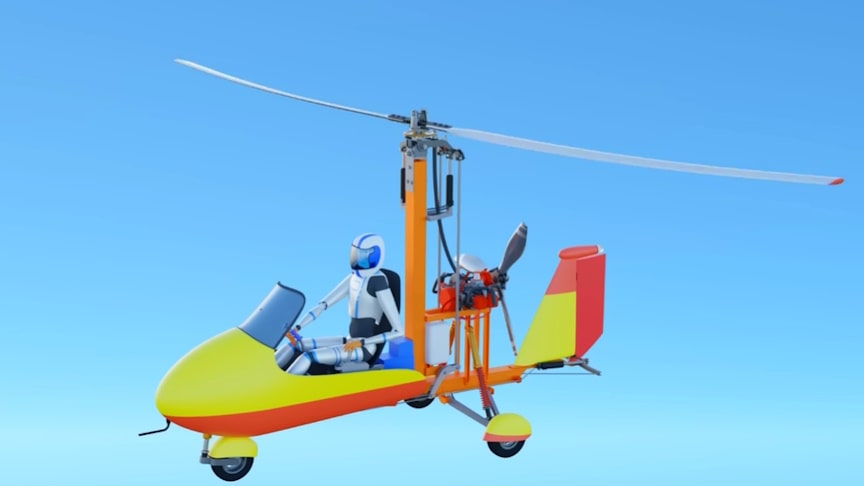In this video, you are going to learn how a gyroplane fly when it’s top rotor is not powered by the engine, also working mechanics of different control units.This is an fundamental 3d representation to give you a basic idea of how a gyroplane fly.
source.image(PrtSc): Animechanics
An autogyro, or gyroplane, is a type of rotorcraft that uses an unpowered rotor in free autorotation to develop lift. An autogyro is characterized by a free-spinning rotor that turns because of the passage of air through the rotor from below. The most common design is the pusher configuration, where the engine and propeller are located behind the pilot and rotor mast.Watch the video from Animechanics:
The downward component of the total aerodynamic reaction of the rotor gives lift to the vehicle, sustaining it in the air. A separate propeller provides forward thrust and can be placed in a puller configuration, with the engine and propeller at the front of the fuselage, or in a pusher configuration, with the engine and propeller at the rear of the fuselage.
Advertisement
Pitch control is achieved by tilting the rotor fore and aft, and roll control is by tilting the rotor laterally. The tilt of the rotor can be effected by utilizing a tilting hub (Cierva), a swashplate (Air & Space 18A), or servo-flaps. A rudder provides yaw control. On pusher configuration autogyros, the rudder is typically placed in the propeller slipstream to maximize yaw control at low airspeed.











